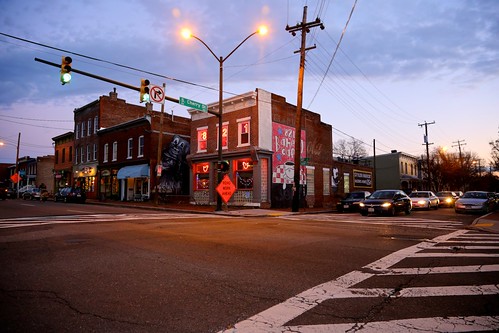I photograph things on my walks to and from work for a number of reasons. I enjoy it certainly but it’s also about making sure I am really looking around. It is interesting to see what I notice and how it relates to the lens I choose to carry.1
What I think about quite a lot is which lens of analysis leads some people to see everything as PD and related to their work. It reminds me about this article (focused on changing perspective). . .
We see, but we do not see: we use our eyes, but our gaze is glancing, frivolously considering its object. We see the signs, but not their meanings. We are not blinded, but we have blinders. My deficiency is one of attention: I simply was not paying close enough attention.
-source
…but then moving deeper (and moving to graffiti hunters) towards a more permanent shift in how you perceive things and the way it draws you into more learning and then more noticing . . .
Saraceni says his GATS encounter on San Pablo was the “whoa moment” for him. “From then on, it was like I had a disease. I began to see stickers, letters, and characters everywhere I went.” Instagram helped Saraceni put artists’ names to the art he was discovering.
-source
And finally reaching a bizarre (possibly harmful) obsession that drags in others and actually compels you to pursue answers past any reasonable stopping point.
The pixel dimensions of the first image, Kinkle realized, were 509 and 503, both primes. He multiplied the numbers and got a URL. An image of a cicada appeared onscreen, above a countdown set to expire in three days. Opening the cicada in OutGuess unveiled yet another message: “You have done well to come this far. Patience is a virtue. Check back at 17:00 on Monday, 9 January 2012. UTC.”
Kinkle slumped in his chair. It was 2 a.m. He had reached the next level of the game—but what had begun as an online lark was about to breach the walls of the Web and enter real life.
-source
So there is the tool, the Twitter, the whatever. You see people use them and change little. They become not a HammerHand2 but merely one who hammers- nails, two penny nails and only into plywood to make those bird houses that birds don’t seem to like. They have changed, I suppose, but there’s been no transformation and that change will not echo. There is no momentum. No larger understandings or reconceptualizations of how one might join things or how a hammer might do other things- stranger things. They don’t now look at things and wonder “Who was that made? Could I do that with a hammer?” That’s where PD keeps failing. We keep teaching hammering while occasionally changing hammer types. Our goal3 should be different.

cc licensed ( BY SA ) flickr photo shared by Tom Woodward

cc licensed ( BY SA ) flickr photo shared by Tom Woodward


